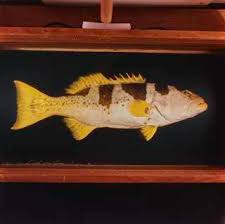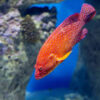The Role of the Dragon in Chinese New Year Celebrations

Chinese New Year, or Chunjie (春节), is the most important traditional festival in China, marking the beginning of the lunar new year and celebrated by millions of people worldwide. As a time of reunion, renewal, and respect for ancestors, this holiday is rich in customs, symbolism, and festive activities. Among the most iconic symbols associated with Chinese New Year is the dragon, a creature of immense cultural significance. The dragon plays a pivotal role in the celebrations, representing power, good fortune, and the renewal of life. This article explores the multifaceted role of the dragon in Chinese New Year festivals, from its presence in parades to its symbolism in rituals and its deep cultural significance.
The Symbolic Meaning of the Dragon in Chinese Culture
Before diving into the specific ways the dragon appears during the Chinese New Year, it is essential to understand its deep cultural and symbolic significance. In Chinese culture, the dragon is a revered mythical creature often associated with good luck, prosperity, and strength. It is considered a benevolent and auspicious animal, unlike the fearsome and destructive dragons in Western mythology.
In ancient China, the dragon was linked with the emperor, who was regarded as the “Son of Heaven.” The emperor’s authority was believed to be divinely mandated, and the dragon symbolized his supreme power. The Chinese dragon is often depicted as a symbol of cosmic balance, able to control the elements—especially water—and bring rain, ensuring agricultural prosperity.
During Chinese New Year, the dragon is an enduring symbol of renewal, growth, and the fulfillment of wishes. It is also a sign of protection, warding off evil spirits and bringing good fortune to households, communities, and the country as a whole.
The Dragon Dance: A Traditional Spectacle
One of the most prominent ways the dragon is incorporated into Chinese New Year celebrations is through the dragon dance. This traditional performance, typically held during the festive season, features a long, colorful dragon that is manipulated by a team of dancers. The dragon, often made from fabric and bamboo, can stretch several meters long and is held aloft by the performers using poles.
The dragon dance is believed to bring good luck and drive away evil spirits. It is often accompanied by loud music, the sounds of drums, gongs, and cymbals, which add to the excitement and intensity of the performance. The sight of the dragon weaving and undulating through the streets, mimicking the movements of a real dragon, is both awe-inspiring and exhilarating for the audience.
The dance is typically performed during the Chinese New Year parade, which takes place in various cities and towns across China, as well as in Chinatowns around the world. It is a highlight of the festival, attracting large crowds of spectators who come to witness the spectacular display and enjoy the festivities.
The dragon dance has its roots in ancient China, where it was used as a way to celebrate the arrival of spring and to bring blessings for a prosperous year. Over time, the dance has become an essential part of Chinese New Year traditions, and it continues to be one of the most beloved customs associated with the holiday.
The Dragon as a Symbol of Good Fortune
During Chinese New Year, the dragon is often invoked as a symbol of good fortune and prosperity. Many families display dragon decorations in their homes to attract wealth and good luck in the coming year. Dragon motifs are common on lanterns, banners, scrolls, and even on red envelopes (called hongbao), which are given to children and unmarried adults as a symbol of good luck and blessings.
The color red is prominently featured in Chinese New Year celebrations, as it is believed to ward off evil spirits and bring good fortune. The dragon, often adorned in red, gold, and yellow, is seen as a powerful protector during the festive season. The combination of these colors symbolizes wealth, happiness, and auspiciousness, which are highly sought after during the New Year celebrations.
In addition to being a symbol of good fortune, the dragon is also linked with longevity and health. It is common for families to pray for the health and well-being of their loved ones during Chinese New Year, and the dragon’s presence in these prayers represents the wish for a long and prosperous life. The belief is that by honoring the dragon, individuals can receive divine blessings that ensure their happiness and success in the coming year.
The Dragon Boat Races: A Celebration of Strength and Unity
Another key tradition associated with the dragon during Chinese New Year is the dragon boat race, although this event is more commonly held during the Dragon Boat Festival (Duānwǔ Jié, 端午节), which falls on the 5th day of the 5th lunar month. However, dragon boat races have become a year-round celebration of the dragon’s strength and endurance, and some regions may also organize races during the New Year period as part of the ongoing festivities.
The dragon boat race features teams of rowers who race in long, narrow boats decorated with dragon heads and tails. The races are fierce and competitive, symbolizing the power of the dragon and the unity of the community. Dragon boat racing is an ancient Chinese tradition that dates back to the Warring States period and is still practiced today in many regions of China and abroad.
While the dragon boat race is not directly associated with the New Year festival itself, it embodies the same values of strength, unity, and good fortune that are central to the Chinese New Year celebrations. The dragon is a powerful symbol of these qualities, and its presence in the race reflects the desire for success and prosperity in all areas of life.
The Dragon and the Kitchen God: An Important Ritual Connection
In addition to the more public festivities involving the dragon, there are also rituals and practices that involve the dragon in more private, household settings. One such ritual is the worship of the Kitchen God, a deity that is believed to protect the household and ensure the family’s well-being in the coming year. During the Chinese New Year celebrations, families typically honor the Kitchen God by offering sacrifices and prayers to bring blessings for the new year.
In some regions, the dragon plays a role in the Kitchen God worship rituals. It is common to find images of the dragon displayed alongside the Kitchen God’s altar. The dragon is seen as a protector of the household and is believed to ensure that the blessings from the Kitchen God are abundant. The ritual of honoring the Kitchen God, alongside the presence of the dragon, reflects the interconnectedness of the home, the natural world, and the divine during the Chinese New Year.
The Dragon and the New Year’s Feast
No Chinese New Year celebration is complete without a grand family feast, which is a time for relatives to gather, share a meal, and celebrate the coming year together. Many dishes served during the New Year meal are symbolic of prosperity and good fortune, such as fish (for surplus) and dumplings (for wealth). Dragon motifs may also appear in the food itself, particularly in desserts or decorative items made to resemble dragons.
In some regions, it is customary to create dragon-shaped pastries or sweets, which are then shared among family members as a symbol of the dragon’s protection and good luck. These treats serve as both a delicious part of the meal and a reminder of the powerful symbolism the dragon holds in Chinese culture.
The Dragon in Chinese New Year Parades and Decorations
The dragon’s presence during Chinese New Year extends far beyond the streets and homes of families. In many cities and towns, elaborate parades are held to celebrate the New Year, and the dragon is one of the most prominent symbols featured in these processions. A dragon, often tens of meters long, is carried by teams of dancers who manipulate the creature’s body in graceful, serpentine movements.
The dragon’s movements symbolize the flow of good energy and prosperity, and the entire parade is designed to create an atmosphere of joy, excitement, and renewal. The dragon may also be seen alongside other traditional Chinese symbols, such as the phoenix, representing the balance of male and female energies, or the lion, symbolizing courage and strength.
As Chinese New Year celebrations progress, the dragon is not just a symbol of festivity; it is a deeply embedded part of the cultural fabric of the festival, representing hopes for a prosperous, peaceful, and harmonious new year.
Conclusion: The Dragon’s Enduring Role in Chinese New Year
Throughout history, the dragon has remained a central figure in Chinese New Year celebrations. Whether through the exhilarating dragon dance, the symbolism of good fortune, or the ritual worship that connects the creature with the divine, the dragon’s role in the festival is multifaceted and powerful. It represents the harmonious balance of nature, the protection of the community, and the renewal of life. As Chinese New Year continues to be celebrated around the world, the dragon remains a symbol of hope, strength, and prosperity for the year ahead.

